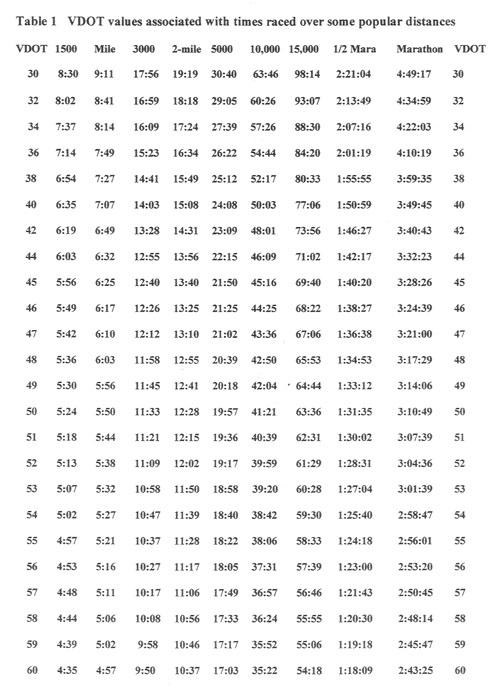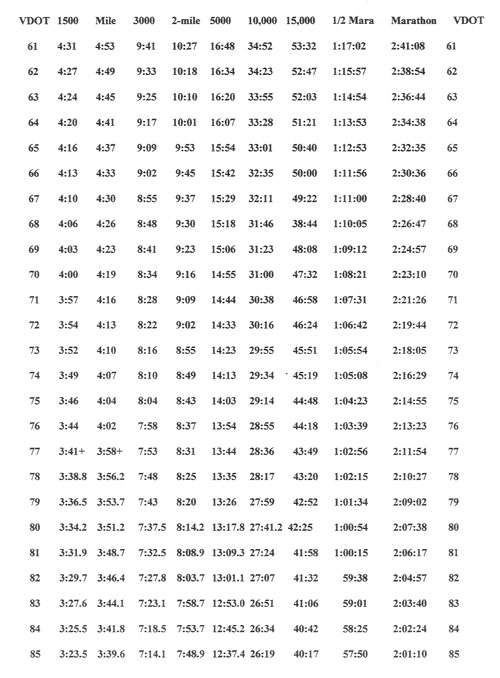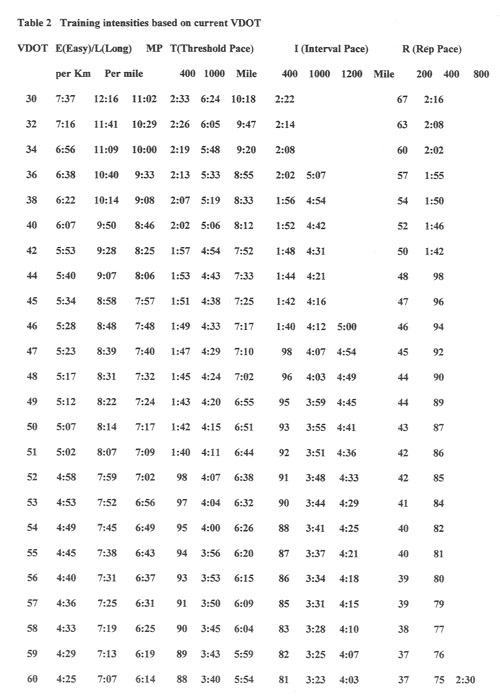When using a race performance to predict a performance for another, yet-to-be-run distance, use a performance run under similar conditions (terrain, wind, temperature and altitude). A longer race (15K to 25K, for example) will usually be a better marathon predictor than a 1-mile or 5K.


To use VDOT to determine training intensities, plug the identified VDOT from the first table into the table below and read across that row to identify paces:
Easy/Long (E/L) runs = Sunday morning or social run
Marathon Pace (MP) training = Half-marathon-to-marathon-pace
Threshold (T) runs = "fresh"
Interval (I) = "good build-up"
Repetition (R) = "good"

Don't try to beat the assigned training intensities. Some training plans call for a 5K test race at frequent intervals; to train faster, justify a higher VDOT by performing better in that test race situation.

